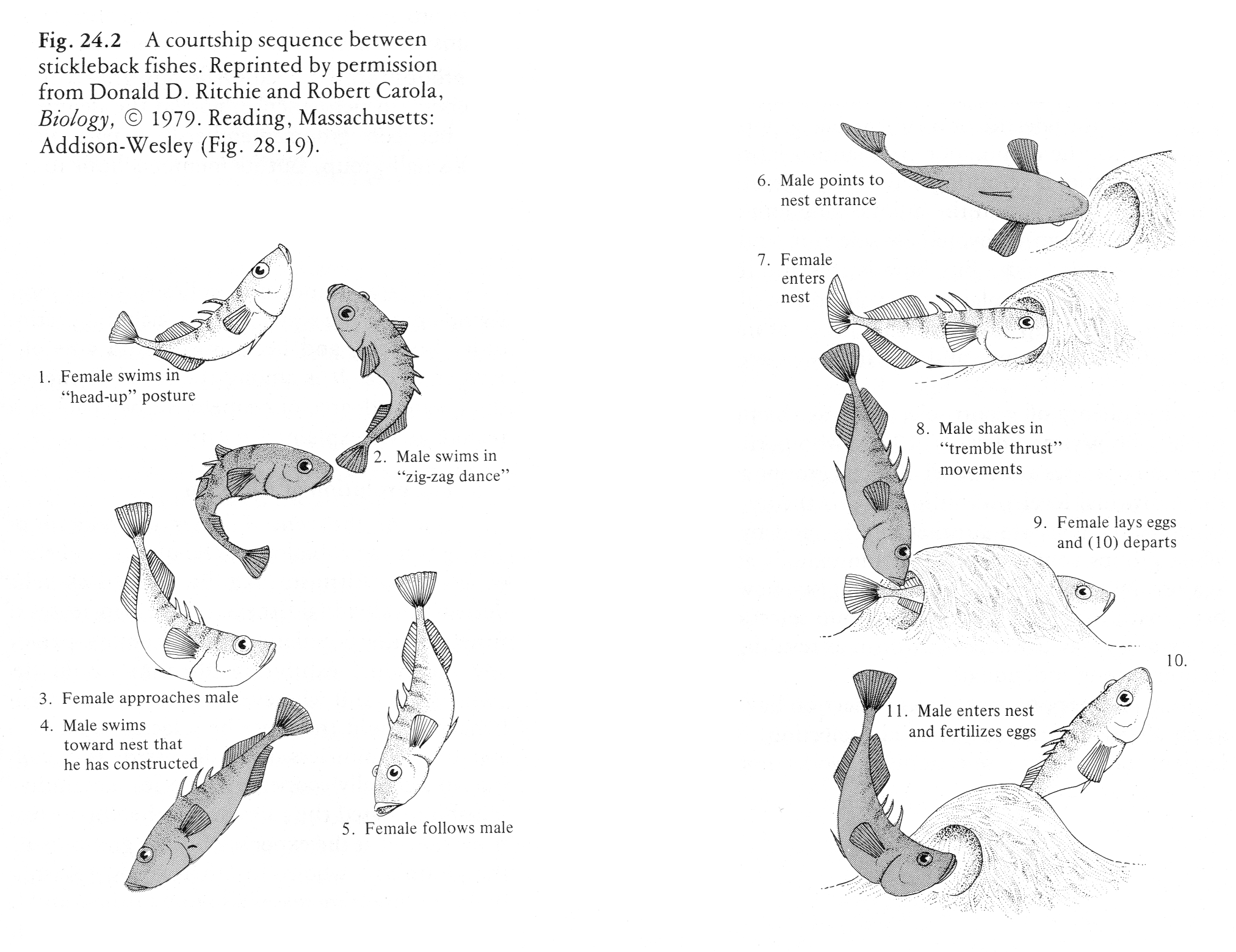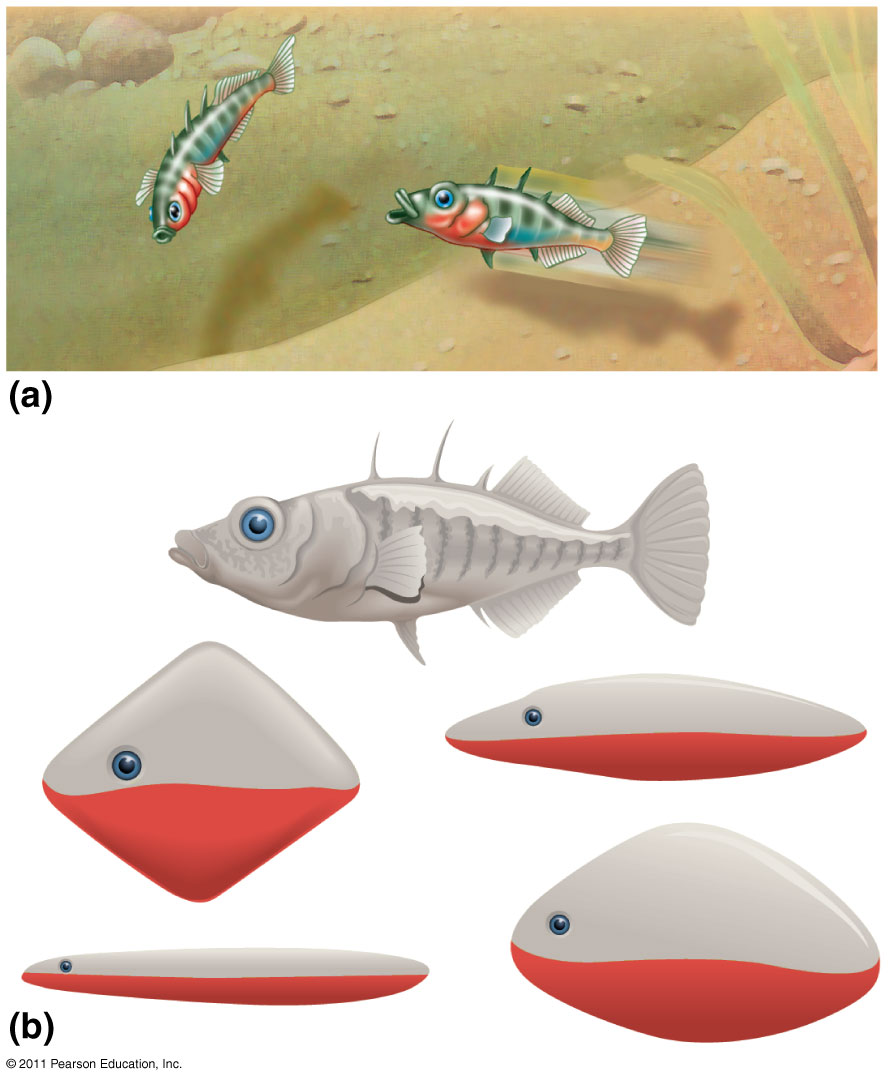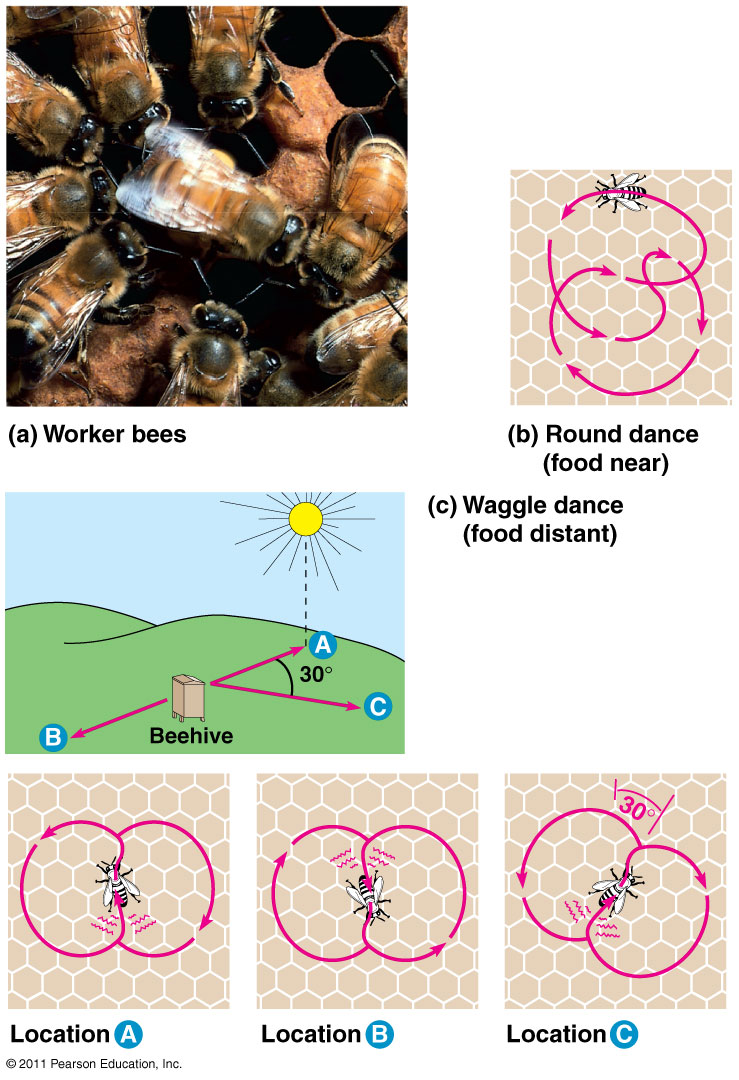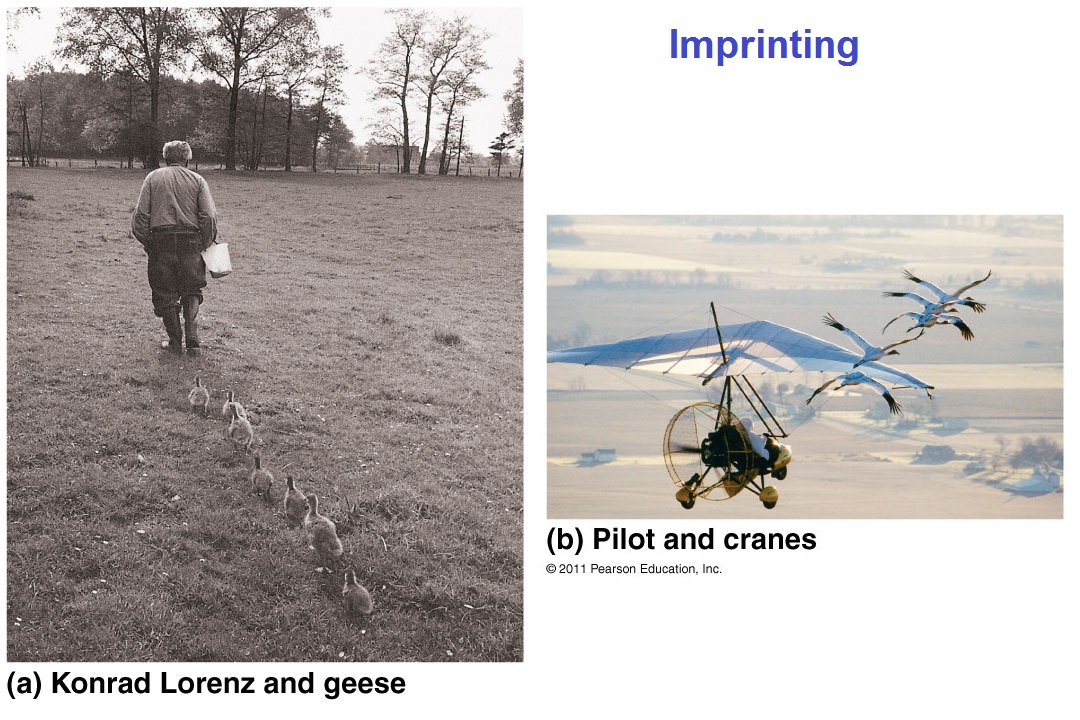


Coutship in stickleback fishes is stimulated by a red belly and a slender outline,
so the lower left clay model has maximal stimulation (not the realistic model on top)

| Complex instinct in bees:
Karl von Frisch won the Nobel Prize for investigating this. Round dance signals that food is very near. "Waggle dance" (in figure-8 pattern) shows location and distance of food-- Duration of abdominal "waggle" indicates how far away food is located; Direction of bee during "waggle" shows direction of food source: Waggle while going UP indicates that food is toward sun in sky; Waggle while going DOWN indicates that food is away from sun's position; Waggle 30o to the right of vertical shows that food is located 30o to the right of sun's position in the sky, etc. AND, if the dance display is delayed, the bee compensates for the sun's movement across the sky! |

| Imprinting is learned behavior that is learned
very early in life, usually during a "critical period" shortly after birth or hatching. Konrad Lorenz won the Nobel Prize for
showing that greylag geese are usually imprinted early in life to follow their mother. But, if a different individual
is present instead during the "critical period," they can be imprinted to follow a male goose, or a dog,
or even Lorenz himself! One of Lorenz's students used imprinting to teach migration routes to cranes. He imprinted them to follow his small private plane, then he led them along a route which they learned and followed on their own. |

Conditioned learning: this blue jay learns that a monarch butterfly is very bad-tasting. After one encounter, it will never try to each a monarch again (or a viceroy butterfly, which looks enough like a monarch to explain mimicry).